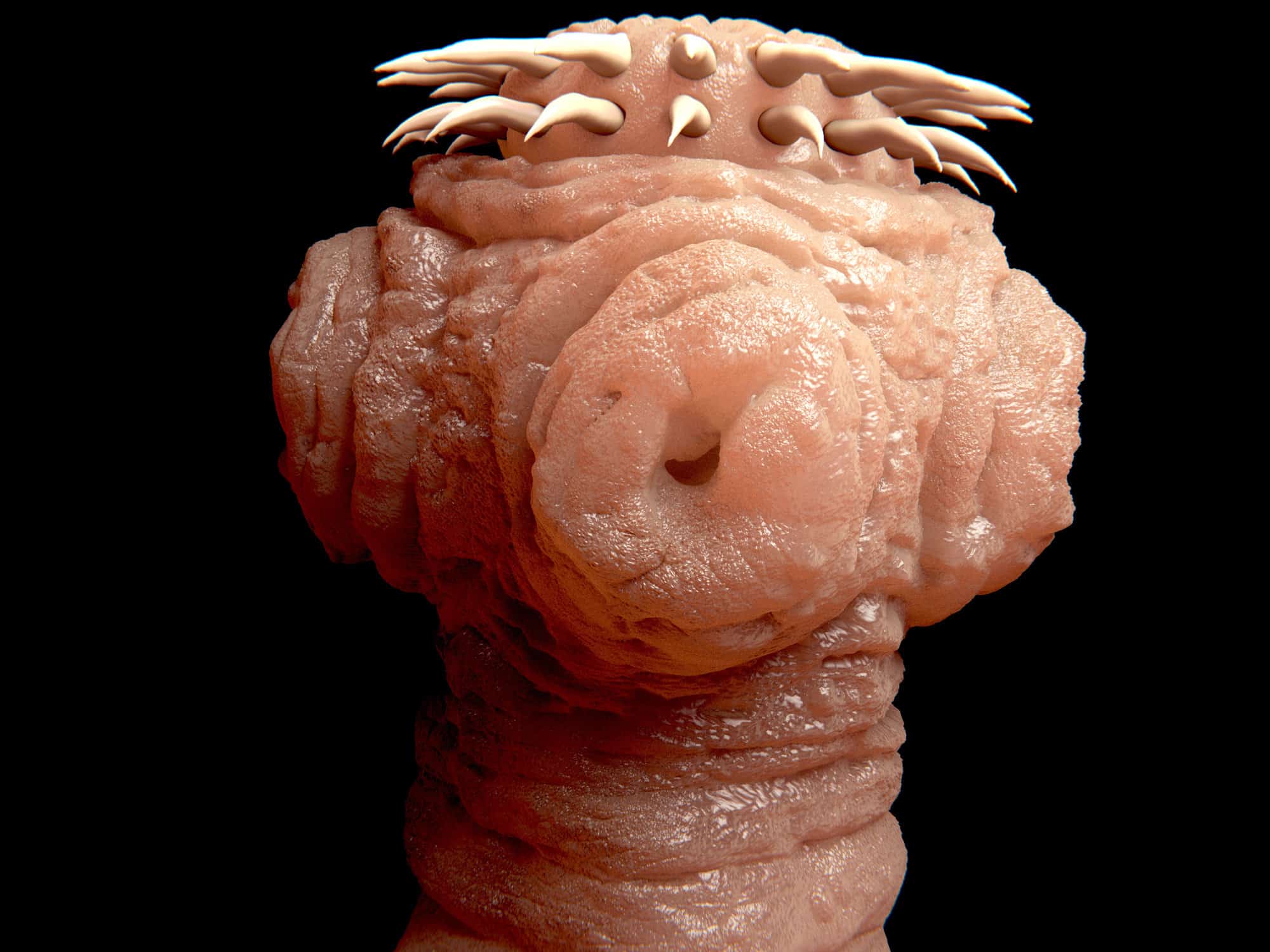Ahhhh, to be wild. Yet, is it all it’s cracked up to be? In the wild, animals don’t have access to medical care, and often, diseases and parasites are just the norm. A recent clip seen online may cause people to rethink the whole idea of “wild and free,” especially if apex predators suffer from similar ailments. Here’s how a bear was caught with one of the longest tapeworms ever seen hanging out of its, well, bear (bare) bottom.
This is Truly Disgusting News
In a video clip captured by Mark Bouldoukian and featured on his TikTok, a bear was caught on camera strolling casually toward a parked car in search of a quick snack. At first glance, everything seemed normal. Bears will often come up to cars and look for easy food… but that wasn’t what made this video viral.
As the footage continued, it soon became clear that this was no ordinary bear encounter. A long, white string trailed behind the bear, initially looking like a harmless object caught on its fur. But as the scene unfolded, it became increasingly apparent that this was bear’s version of toilet paper stuck on your foot; this was far more disgusting. The bear was trailing a 30-foot tapeworm out of its rear end.
The threads shooting from the bear’s bottom looked like spider webs (sorry to bring Spiderman into this), but everyone knows that bears can’t spin their own webs. While this scene may look utterly horrifying, it’s apparently not too uncommon!
Brave enough to read on?
Bears and Tapeworms Are Kinda a Thing

Tapeworms are able to be passed to humans through the same method that they are passed to bears.
©iStock.com/selvanegra
Before we delve into the gory details of the tapeworm that made an appearance in our viral video, it’s essential to understand that bears and tapeworms have a longstanding, albeit uninvited, relationship. In fact, this peculiar connection is not a rare occurrence in the wild.
As explained by the popular Instagram account Nature Is Metal (one of the original posters of the video), bears that rely on the yearly salmon run often find themselves playing hosts to these organisms.
The life cycle of this particular parasite, known as the broad fish tapeworm, is a circular one. It all begins with the release of tapeworm eggs into the wild, typically through the droppings of a host bear. These eggs find their way into rivers and streams, where unsuspecting crustaceans become their first victims. As the smaller animals eat the droppings and or operate in the water near them, they unwittingly gobble up the eggs. Then, the next part of the cycle continues when salmon come into the picture. Salmon come along and eat these crustaceans as they swim upriver, looking for their spawning site. Want to guess what eats the salmon?
Once inside the bear’s stomach, the tapeworm larvae latch onto the interior walls, beginning their parasitic life anew. The adult tapeworms, as gruesome as it sounds, stay alive by siphoning nutrients directly from the bear’s digestive system. As evidenced by the recent video clip, it’s possible for a single bear to host multiple parasites simultaneously.
You Might Be Wondering If Humans Can Get Them…

You may not be so sashimi-happy after learning how humans can contract tapeworms…
©iStock.com/key05
Fan of sashimi? Maybe not anymore.
Now that we’ve taken a closer look at the peculiar relationship between bears and tapeworms, you might be wondering if these unsettling parasites pose any threat to humans. The answer might surprise you: yes, humans can indeed become hosts for these tapeworms, but it’s not just the fish tapeworms from bears that we need to worry about.
Fish tapeworms, scientifically known as Diphyllobothrium spp., are a particular concern for humans. These tapeworms are contracted through the consumption of raw or undercooked freshwater fish. Even seemingly safe options like marinated and smoked fish can transmit the worms, according to this study. While cases in areas where these tapeworms were once endemic have decreased, largely thanks to improved sewage treatment processes, other parts of the developed world have seen an increase in infections. This uptick is likely due to the growing popularity of dishes involving raw fish, such as Japanese sushi and sashimi, or other similar raw-fish dishes around the world.
Thankfully, humans have some medicines and treatments to take care of it, whereas a bear has to just suffer through. The freedom of the wilds, or whatever.
Is It Normal For a Bear To Drag a Tapeworm?
It is actually normal for a bear to have a tapeworm trailing from behind. While it may not be an everyday occurrence to witness this, Alaskan bears have been seen in this state multiple times, and filmed. The video we shared is the tip of the iceberg. Once the tapeworm has lived out its days, it will often come out in the bear’s scat. Sometimes, the worm is still living. Ewww, gross!
Thank you for reading! Have some feedback for us? Contact the AZ Animals editorial team.








